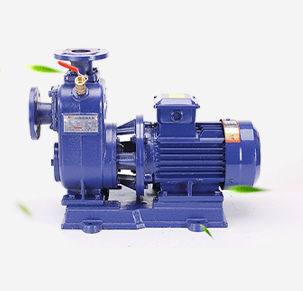Finnish
- Afrikaans
- Albanian
- Amharic
- Arabic
- Armenian
- Azerbaijani
- Basque
- Belarusian
- Bengali
- Bosnian
- Bulgarian
- Catalan
- Cebuano
- Corsican
- Croatian
- Czech
- Danish
- Dutch
- English
- Esperanto
- Estonian
- Finnish
- French
- Frisian
- Galician
- Georgian
- German
- Greek
- Gujarati
- Haitian Creole
- hausa
- hawaiian
- Hebrew
- Hindi
- Miao
- Hungarian
- Icelandic
- igbo
- Indonesian
- irish
- Italian
- Japanese
- Javanese
- Kannada
- kazakh
- Khmer
- Rwandese
- Korean
- Kurdish
- Kyrgyz
- Lao
- Latin
- Latvian
- Lithuanian
- Luxembourgish
- Macedonian
- Malgashi
- Malay
- Malayalam
- Maltese
- Maori
- Marathi
- Mongolian
- Myanmar
- Nepali
- Norwegian
- Norwegian
- Occitan
- Pashto
- Persian
- Polish
- Portuguese
- Punjabi
- Romanian
- Russian
- Samoan
- Scottish Gaelic
- Serbian
- Sesotho
- Shona
- Sindhi
- Sinhala
- Slovak
- Slovenian
- Somali
- Spanish
- Sundanese
- Swahili
- Swedish
- Tagalog
- Tajik
- Tamil
- Tatar
- Telugu
- Thai
- Turkish
- Turkmen
- Ukrainian
- Urdu
- Uighur
- Uzbek
- Vietnamese
- Welsh
- Bantu
- Yiddish
- Yoruba
- Zulu
Telephone: +86 13120555503
Email: frank@cypump.com
loka . 02, 2024 11:04 Back to list
septic tank lift pump
Understanding Septic Tank Lift Pumps Essential Components for Efficient Wastewater Management
Septic systems are a crucial part of many rural and suburban residences, providing a decentralized method for wastewater treatment. A critical component of some septic systems is the lift pump, specifically designed for situations where gravity alone cannot transport wastewater to the drain field. In this article, we will explore the role of septic tank lift pumps, how they work, and their importance in maintaining an effective septic system.
What is a Septic Tank Lift Pump?
A septic tank lift pump is a submersible pump used to move wastewater from the septic tank to the drain field or to a secondary treatment location. It is often required in properties located in low-lying areas or where the drain field is positioned at a higher elevation than the septic tank. The lift pump ensures that sewage and effluent flow smoothly and efficiently, reducing the risk of clogs and system failures.
How Does a Lift Pump Work?
Lift pumps operate based on a straightforward principle they utilize a motor to create pressure that pushes wastewater upward. When the level of liquid in the septic tank reaches a predetermined level, a float switch activates the pump. Once the pump begins operating, it forces the wastewater through a discharge pipe and into the drain field. After the level of wastewater in the tank lowers, the float switch turns off the pump, halting the operation.
Several types of lift pumps exist, including effluent pumps and grinder pumps. Effluent pumps are designed to handle liquid waste with small solids, while grinder pumps are more robust, capable of grinding up larger waste particles into a slurry before pumping. The choice of pump largely depends on the specific requirements of the septic system and the nature of the wastewater being handled.
Importance of Lift Pumps
septic tank lift pump

The importance of lift pumps in septic systems cannot be overstated. Here are a few key reasons why they are essential
1. Preventing System Failure Inadequate drainage can lead to sewage backup, which poses health risks and can cause significant damage to property. Lift pumps help ensure that the system functions properly, preventing costly repairs and environmental hazards.
2. Enhancing Efficiency By facilitating the movement of wastewater, lift pumps enhance the overall efficiency of a septic system. This efficiency leads to better treatment of effluent and minimizes the risk of overloading the drain field.
3. Longevity of the System Properly functioning lift pumps can prolong the lifespan of a septic system. Regular maintenance and timely replacement of lift pumps can prevent systemic issues that may arise from neglect or equipment failure.
Maintenance and Care
To ensure optimal performance, lift pumps require regular maintenance. Homeowners should periodically check the float switch and pump functionality, remove any obstructions, and have the pump inspected by a professional. Additionally, it’s crucial to avoid flushing non-biodegradable materials and chemicals into the septic system, as these can harm the pump and disrupt the treatment process.
Conclusion
In summary, septic tank lift pumps play a vital role in the functionality of septic systems, ensuring that wastewater is effectively managed and transported. Understanding the importance of these pumps, along with proper maintenance practices, can help homeowners maintain a healthy septic system, ultimately protecting both their property and the environment.
-
Heavy-Duty Mining Sludge Pumps - Wear-Resistant Slurry Handling
NewsAug.02,2025
-
Horizontal Split Case Pump with GPT-4 Turbo | High Efficiency
NewsAug.01,2025
-
ISG Series Pipeline Pump - Chi Yuan Pumps | High Efficiency, Durable Design
NewsAug.01,2025
-
Advanced Flue Gas Desulfurization Pump with GPT-4 Turbo | Durable & Efficient
NewsJul.31,2025
-
ISG Series Vertical Pipeline Pump - Chi Yuan Pumps | Advanced Hydraulic Design&Durable Construction
NewsJul.31,2025
-
ISG Series Vertical Pipeline Pump - Chi Yuan Pumps | Energy Efficient & Low Noise
NewsJul.31,2025










